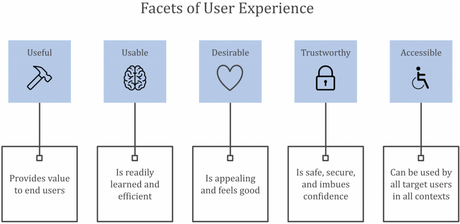Most software fails to deliver on business expectations and user needs. In a recent study, Gartner estimated that between 60% and 85% of software projects fail and McKinsey reported that 70% of enterprise transformations fail.
A major contributor to these failures is inadequate user experience (UX). This comes from a poor understanding of user needs, and from poor design which may result in the following:
For customer-facing digital products and solutions: Reduced customer engagement and lower conversion rates; and
For employee-facing software: Lower employee adoption, higher cost of training and support, and longer than expected time to achieve proficiency.
This paradox of automation was exposed 25 years ago by Thomas K. Landauer in his book The Trouble with Computers: Usefulness, Usability, and Productivity where he discusses why investments in computing have not resulted in similar productivity payoffs. Twenty-five years later, and despite all of the buzz in the past decade about design thinking, we still have a long way to go.
The Impact of Poor User Experience
The moment you embark on a technology-based initiative, your expected returns are subject to erosion from inadequate attention to the UX. The negative business impacts of poor UX in your technology solutions may include:
Degraded customer satisfaction, loyalty, revenue, share of wallet, and brand equity;
Lower employee productivity and engagement, increasing operating costs. (A major computer company is reported to have recognized a productivity benefit of $6.8 million, or 100 times their direct investment in UX methods, in the first year after use);
Lower data integrity, leading to erosion of trust; and
Increased cost of development. (After UX methods were applied at UK’s Inland Revenue agency, development time savings were estimated to be £231,000, or 2.6 times the cost of the direct time spent executing the UX methods. Billions of dollars are wasted globally every year developing functions that are underutilized due to lack of need, or poor UX.)
Consider your technology assets: are you getting ideal value from them? How much is a poor UX impacting your bottom line?
How a User Experience Audit can Help
A user experience audit can help you gain a complete understanding of the hidden (and not-so-hidden) costs of your IT solutions that are not delivering full value. The audit can include:
A survey of your business-critical IT-enabled solutions, reviewing the UX of these in detail and identifying shortcomings and opportunities;
A comparison of the UX of your solutions with best practices within and outside your industry sector;
A review of usage analytics, customer and employee feedback, support logs and other data that reflect how end users experience your technology solutions;
Estimates of potential financial and qualitative impacts associated with the above; and
Recommendations for addressing shortcomings and opportunities, with estimates of associated benefits.
With the audit in hand, you can consider options for addressing the findings. This process raises your awareness, empowering you to make informed decisions. To the extent practical, you can then apply the principles and guidelines of user-centred design to refactor your solution, towards better business and user outcomes.

Organizations who do this right can see dramatic financial results. For example, McKinsey & Co found that companies rated as top design performers increased their revenues and shareholder returns at nearly twice the rate of their respective industry benchmarks.
In addition, Forrester Research summarized several studies in 2018, demonstrating the powerful impact of a focus on customer experience. For example, in one study, customer experience leaders outperformed customer experience laggards by 6- to 10-fold on both stock-price growth and total returns.
With this in mind, consider whether your organization has invested sufficiently in user experience.
For additional information or to book a consultation, please contact us at [email protected].
By Paul Eisen
Paul designs technology-enabled, human-centred business solutions that help maximize return on investment, build customer loyalty, and generate employee engagement. He provides user-experience research, strategy, and design services – including service design and process design – and practice development for organizations evolving and transforming solutions for customers, employees, and business partners.
